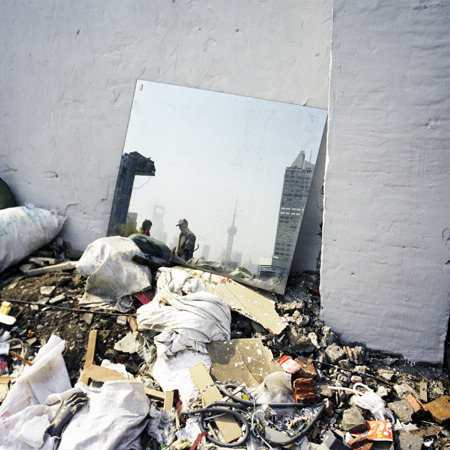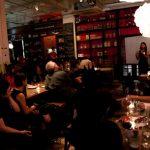Con Edison Immigrant Artist Program Newsletter, Issue No. 12
Featured Artist: Hai Zhang
NYFA Immigrant Artist Program interviews photographer Hai Zhang
IAP: Tell us a bit about your life’s path: Where did you grow up and when did you first come to the US? What was that experience like? What were your biggest struggles upon arriving?
HZ: I grew up in Kunming, a tourist town in southwest of China. After high school, in 1994 I left my hometown to Chongqing for the college where I studied architecture. I came to the US for graduate school and landed in Troy, Alabama on Jan 3, 2000. I don’t think my experience was that much different from many other Chinese students’ although I guess Alabama was a little bit more extreme. The feeling was kind of mixed and complicated. The rural setting of the town compared to how the US was portrayed in the media was the big impact. And the other interesting thing was that in Troy, where I attended business school, I was seeking some change in my life, but I didn’t know why.
Obviously, the change didn’t go very far, after one semester, I went to Miami and back to architecture. Apart from the struggle in language, I think the other biggest struggle was to balance my existing mindset and the wide-open opportunities I had to explore the new world. Maybe I didn’t realize this struggle, but when I recall my memory, I think it was the biggest one. The struggle turned to a tremendous opportunity for me to do a photographic project, To Kill A Mockingbird.
IAP: Did you already think of yourself as an artist, and specifically a photographer, when you came to New York? Did that artistic identity complicate or ease your transition in any way?
HZ: No, I didn’t consider myself as anything when I came to New York in 2001 after graduate school in Miami. I visited New York twice before I moved and fell in love with the diversity and art scenes in this city. […] However, I didn’t photograph that much until a few months before I moved to Washington, DC at the end of 2002. And on the contrary, for that specific moment, photography helped me to create my own nesting world which was alien to the reality, although they were always related.
IAP: How did you move from architecture, in which you hold a master’s degree, into photography? Does your background in architecture continue to influence your artistic practice?
HZ: I guess everyone deserves the second chance in the life. I started taking photographs intensively in 2003 when I was in Washington, DC and met with a great photographer, Hector Emanuel, who encouraged me to keep shooting. And I started to create a little website to show my pictures to my friends. I was working on photography and architecture simultaneously for a long while. Photography does offer me more opportunities to explore the world and to know more stories, which also demands more dedication, energy and time. So at the beginning of 2008, photography won the lead. And yes, my background in architecture definitely influenced my sense of space and environment. But I think the influence isn’t unilateral.
IAP: Many of your projects involve both domestic and international travel – what are you looking for when you travel to these new locations to shoot?
HZ: To explore the new places and new things is always one of my best interests. It is an incredible feeling when I discover something through my own eyes. I would like to leave the place to unfold itself. However, I’d also like to visit the same place and same person several times. I am looking to better understand the place and people. Stories are always what I am very much interested in hearing.
IAP: Clearly architecture plays a role in your most recent project on people’s housing in China, which you will be presenting at the Brooklyn Library next week. How were you able to fund this project? And given its socially critical nature, what, if anything, do you hope to see as a result?
HZ: It is a project of 2008-2009 Rafael Vinoly Architects Research Fellowship. We won the fellowship through an open call for proposals at the end of 2008. So the funding for the research activities during the year of 2009 and sometime of this year was from the fellowship. They are very open to the different research approaches. So we have been able to combine photography, architecture and several other aspects together. We are very grateful for this fellowship that made the project possible. I worked on the project with my research partner, Marcel Baumler who is currently in Shanghai and collaborated with Guochuan Feng on the Shenzhen part.
Cities are composed of architecture and artificial spaces. However, in their complexity, they are much more than buildings and so-called forward-looking images. Their essence is made up of the people who shape them. Thus, from the very beginning, I wanted to focus on the people. We aim to represent different voices and perspectives and pus the people into the forefront of the discussion. We hope the project can stimulate more social debate and bridge experience in China from a local and social point of view to a wider audience. To talk at the McKinley Park Library in Brooklyn to the community of Chinese immigrants there is a great opportunity for us to start engaging a broader audience. We are also working on the publication with the Rafael Vinoly Architects Research Fellowship and expecting the book later this year.
Visit Hai Zhang’s website: www.oceanmate.com




